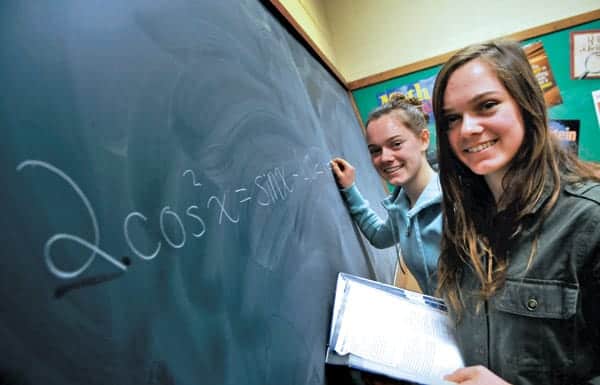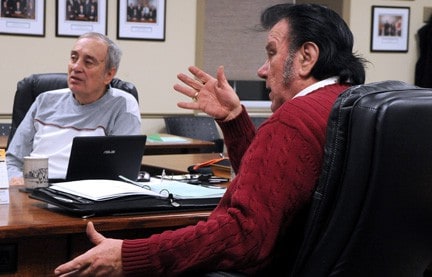EDSS teachers among those who’ve seen falling grades, need for changes to make numbers more accessible to students
![Studies suggest many of us can’t solve the equation on the board, but we should be able to. Students such as Julia (right) and Alex Hildebrand, in EDSS teacher Christine Ruza’s math classroom Wednesday, may eventually see changes as efforts are being made countrywide to improve math scores in all schools. [Elena Maystruk / The Observer]](https://www.observerxtra.com/content/images/wp-content/uploads/2014/01/post_math.jpg)
Norman Emptage, an Elmira high school teacher of mathematics with roots in engineering, has seen student skills essential to success in math decline with every passing year. Some students can’t see the big picture anymore.
“I can see they can’t visualize stuff.”
Last month, an Organization for Economic Co-operation and Development (OECD) international assessment put Canadian math students well behind top ranking countries (among them China, Korea and Switzerland). Now Ontario is investing $4 million into improving the way teachers teach the subject.
“The province is going to a two-year Bachelor of Education Degree, but even in that shift there is no guarantee the faculties of education are going to do any more than what they were already doing … no guarantee even with the change, that faculties are going to increase the amount of hours teacher will have to learn how to teach mathematics,” said Wilfrid Laurier University professor Donna Kotsopoulos, an expert in mathematics education.
The new education program will be implemented in the next two years. Currently teachers receive between 30 and 36 hours on average of instruction on teaching math.
“There are relatively few formally trained mathematics teachers in the province, especially in the elementary panel. Is it something that you’ve struggled with? Is it something that you haven’t studied in six, seven, eight years? If you haven’t studied mathematics in six or seven years and now you are teaching it, it can be paralyzing,” Kotsopoulos said.
Education Quality and Accountability Office (EQAO) testing shows a three per cent drop in Waterloo Region public school Grade 3 math scores down from 62 per cent in 2011–2012 to 59 per cent in 2012-2013 while sixth-graders fell to 53 per cent from 55. The catholic board saw a 67 per cent average in Grade 3, down from 70 per cent in 2011-2012 and in Grade 6, down from 56 per cent to 54 per cent.
Teachers nervous about teaching the subject may rely too heavily on secondary material such as textbooks, consequently not having the knowledge to weed out the good sources from the bad, Kotsopoulos said.
Yet, fear of mathematics in both teachers and students is largely without just cause, she adds. Most of us are perfectly capable of understanding the complexities.
“There’s a very small percentage of society that can’t do complex mathematics, about six per cent. The rest of us are capable of doing amazing things with numbers.”
Emptage suggest fun visuals be used to reinforce mathematical theory.
“What [students] may have started to get developed in the younger grades doesn’t get it reinforced in any other thing except a math class. If you have it along with something that’s a physical implementation: building something, measuring something, cutting it out, that really brings it home but, if they don’t see it visually, math often doesn’t click for many people. We’ve taken that out of the curriculum.”
The early use of calculators at the elementary level keeps kids from getting close with numbers, said EDSS teacher Youri Lepp.
“It’s just a black box: you have to press the right button and hope you did the right thing without really understanding what they are doing, why and how numbers go together. If they’ve lost the intellectual connection with numbers and patterns, it’s all just a mystery.”
Math can open many doors, fellow teacher Paul Hildebrand added, and current standards are putting kids at a disadvantage.
“When they get to university [students] still cannot do a lot of it without a calculator and they should be able to. If you take a look at an engineering faculty at the University of Waterloo, why do you think there are so many international students or kids that have done [advanced placement] courses? The kids coming out of an average high school could not handle a program like that.”
Still, the renewed emphasis on mathematics could be a lifeline, added EDSS teacher Christine Ruza:
“It’s much more a systemic problem than it is an issue with any particular teacher. … I think the future is bright for math. The fact that we are looking seriously at what we can do better, that shows promising things.”









